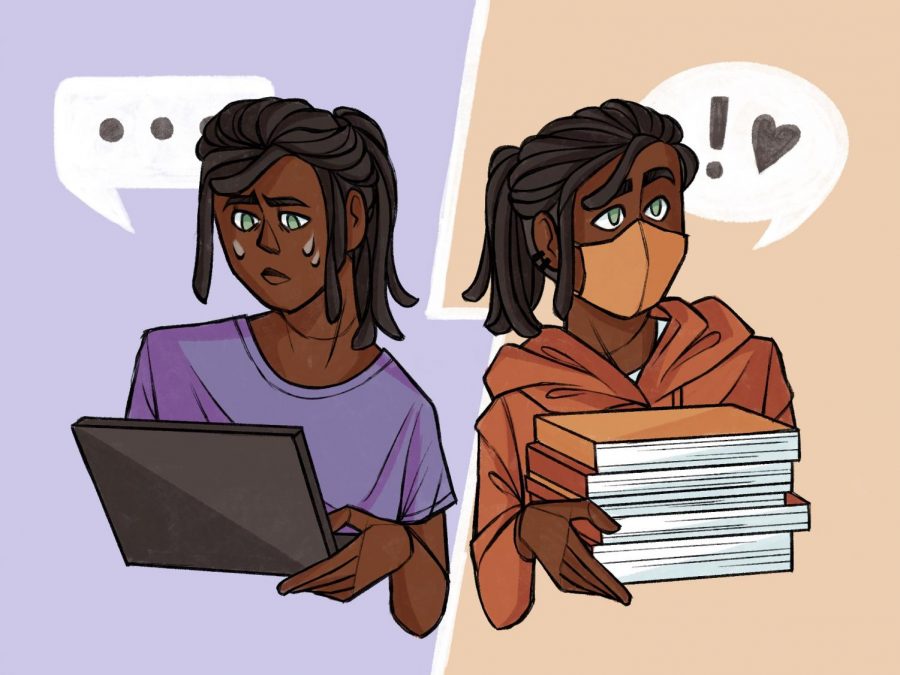FOCUS: A year of isolation heightened anxiety and disengagement. What now?
Many factors impacted the mental health of students and teachers during distance learning and such factors are still prevalent as SCHS returns to normalcy.
In Spring of 2020, the COVID-19 pandemic hit the world hard and fast, impacting everyone. Students and teachers had to shelter-in-place and were thrown into a new educational format, which continued into the 2020-2021 school year.
“Well, I’ll put it this way. This is my thirteenth year teaching. Last year was literally the only year I’ve considered quitting my job,” SCHS science teacher Sara Carvalho said.
For Carvalho, virtual classes were a jarring change and much less enjoyable than in person.
“It was just not the same,” Carvalho said. “It was really hard to be motivated to teach when you don’t know if you’re even doing a good job or not. And I know a lot of teachers felt that way.”
A survey conducted by Active Minds, a nonprofit advocating for mental health education, found that 80 percent of students experienced their mental health worsen during distance learning.
Junior Alessio Hess’s anxiety stemmed from being surrounded by icons instead of faces.
“People would leave the class because they didn’t want to speak,” Hess said. “I got really anxious when they (the teacher) would call on someone because it’s just silence. Everyone’s on mute. There isn’t that whispering or talking to reassure you that you aren’t alone.”
Aside from education, people experienced deficits in their social lives. The Journal of Medical Research reported that less social interaction caused increased stress and anxiety levels for 86 percent of participants.
“It was lonely. And it got boring,” Carvalho said. “A lot of the people I teach with are my friends, so not seeing them for a year at school, that was rough.”
Like Hess, sophomore Semra Hidic struggled with social interaction. Hess lost many friendships, and Hidic felt hers were distant. They believe their feelings of loneliness increased due to distance learning.
“It (distance learning) definitely felt like a big barrier to the point where I almost forgot how it felt like being back in school with friends,” Hidic said.
SCHS’s Wellness Coordinator, Michelle Sandoval, observed the effects of distance learning first hand.
“There’s so many different variables that impacted students, on top of not being able to be around their peers and socialize and have some normal development,” Sandoval said. “The stress of the pandemic really affects us as a trauma, and trauma is a brain injury that can impact us – our ability to function, our ability to learn, our ability to do anything.”
Though distance learning was disadvantageous, some students and staff found a silver lining to their experiences. Their revelations helped them mature and in some ways, improve their mental health. Carvalho learned to cope with stress, juggling responsibilities in her job and family.
“I got better at strategizing what I needed to worry about at any given time,” she said. “This is kind of cheesy, but my motto became ‘Strategize your stress.’ (…) Otherwise, you get overwhelmed.”
Hess matured in identity. Due to the isolated environment, he did not feel the need to fit in, and he became more comfortable with himself.
“Quarantine, alone, in a way helped because I didn’t know who to talk to,” Hess said. “Because of that, I kind of was talking to myself the whole time and became me.”
Now, SCHS is back to in-person learning. The campus gates are open and friends are back together for the first time in nearly two years. Though the transition is difficult for many, students and staff are excited for the year ahead.
“I’m making connections and making friends, gaining confidence again, making bonds – I can actually see people and just be somewhere,” Hess said. “I’m getting back that teenage life I lost.”


